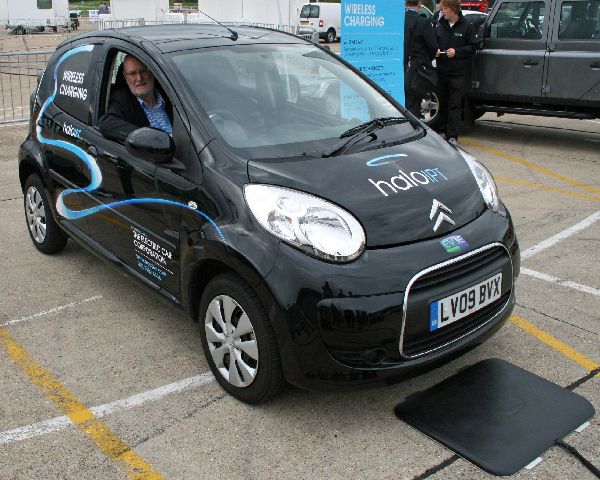
What is it?
In the age of skyrocketing fuel prices, electric cars can prove a boon to many. And now the world of electric cars has another groundbreaking innovation to its credit – the wireless electric car chargers. Yes, you could soon charge your electric car with the wireless charging pad or better still, charge while you drive along roads that have these pads installed on them. This system is known as the IPT or the Inductive Power Transfer. HaloIPT is the world’s first company to bring this only one of its kind charging system into the market for everyone in the form of their wireless chargers.
In such a system, the car is fitted with a receiver pad and you can charge the car by simply parking it over the transmitter pads installed on the ground. Based on the principle of inductive charging, you only need to bring the car in close contact of the charging pad. When the two inductive coils – one that is attached inside the car to a bunch of capacitors, and the other coil that is on the charging pad – are tuned to each other, there is a transfer of energy between them. The next big thing in this innovation is embedding the charging pads into the roads and highways so that cars can charge up even as they pass through.
The Look
The wireless chargers look like ordinary mats and at the first glance, so you might think that there is nothing special about them. But they are the basis of an efficient outdoor charging system.
Why it matters?
There are many salient features of this system. Since the wireless chargers come without cables and other bothersome connections hanging loose from its body, it is neat to use. The inductive power transfer (IPT) comes with easy configuration settings for all types of vehicles. IPT can function even through a slightly bigger distance. Moreover, it detects the presence of the car automatically and is tolerant to the misalignment by drivers. Though this system is designed to operate under tarmac, it also performs under water and when covered in ice or snow.
The lowdown
However, there is a flipside to this system. The system is prone to generating more heat. This heat is an indicator of the electricity being lost in the process of charging. But it is said that the electricity loss is negligible. Since the charging process also requires an electrical field that can connect both the coil, power is lost for the same. Hence, this makes it less efficient than the system involving charging through direct contact. The costs for the manufacture of certain parts of this system, for example, coils and drive electronics can also be on the higher side. Moreover, the manufacturing process is a bit difficult.
By and large, it is being said that the pros of this system totally outdo its cons.
The alternatives
Still, this technology is evidently something that companies want to have a stake in. Prospective buyers are being offered a choice as other companies introduce their own innovations.
• Delphi
Delphi Automotive has joined force with WiTricity Corp., which is engaged in providing wireless transfer technology. They are working on coming up with automatic wireless charging products for hybrid and electric vehicles. As the word wireless suggests, there will be no attached cords and plugs to this product. The driver may simply pull up his car over the wireless charging product and leave it there to get charged. The system begins the charging process the moment the car is parked on it and is capable of transferring over 3,300 watts – enough to fully charge an electric car. The driver may exit the car then. This weather resistant system also does not compulsorily require a perfect parking.
• Evatran
Another provider, who is slowly making its way into the market, is Google. Google is testing a wireless charging car charger, which has been developed by a company called Evatran. Called ‘Plugless Power’, this charging system is based on ‘proximity charging’ and makes use of magnetic induction to charge up electric vehicles. Thanks to Plugless Power, equipped vehicles can now be pulled into a parking space (or garage) and refueled without any human intervention. It is also being said that they are working on cutting the costs involved in recharging an electric vehicle.
The bottom line
The future might hold all the answers to minor hiccups associated with wireless charging of electronic vehicles. With innovations making us a little more wireless everyday, we perhaps can soon expect to see a day when we can leave our cars inside our garages or at parking places installed with wireless charging systems and return on the next day without having to worry about running out of fuel.




